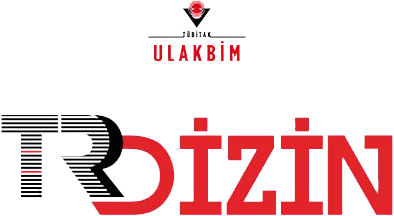
Bu eser Creative Commons Alıntı-GayriTicari-Türetilemez 4.0 Uluslararası Lisansı ile lisanslanmıştır.













Van yöresinde izole edilen dermatofitlerde tür tayini
Hasan IRMAK1, Hamza BOZKURT21TC Sağlık Bakanlığı Halk Sağlığı Genel Müdürlüğü, Ankara2TC Sağlık Bakanlığı, Beytepe Şehit Murat Erdi Eker Devlet Hastanesi, Ankara
GİRİŞ ve AMAÇ: Bu çalışmada, Van yöresinde yüzeysel mikozlara yol açan etkenlerin neler olduğu ve hangi sıklıkta bulunduklarının araştırılması amaçlandı.
YÖNTEM ve GEREÇLER: Bu çalışma, yüzeyel mantar enfeksiyonu olduğu düşünülen 1074 hastadan alınan ör¬neklerde yapıldı. Bu örneklerin 342’si (% 31.84) ayak, 237’si (% 22.07) el, 208’i (% 19.37) saçlı deri, 197’si (% 18.34) gövde, 47’si (% 4.38) kasık ve 43’ü (% 4.00) tırnak bölgesinden alındı.
Alınan tüm örnekler önce direkt mikroskobik olarak incelendi, daha sonra etkenle¬rin izolasyonu amacıyla ikişer adet Sabouraud Dextrose Agar (SDA), Potato Dextrose Agar (PDA), Mycobiotic Agar (MBA) ve Dermatophyte Selective Agar (DSA) besiyerlerine eki¬lerek, ekimlerden birisi 22-26°C ısıda, diğeri 37°C’ye ayarlanmış etüvde inkübe edil¬di.
İzole edilen dermatofitler önce üreme hızı, yüzey görünümü, yüzey örgüsü, yüzey pigmenti, koloni tabanında pigment oluşumu, oda ısısında ya da 37°C’de üreyip ürememe özellikleri gibi makroskobik özellikleri açısından incelendi, daha sonra selofan bant yönte¬mi ile Laktofenol Pamuk Mavisi preparasyonu hazırlanarak dermatofıtlerin hif ve spor yapı¬ları gibi mikroskobik özellikleri incelenerek kaydedildi. Ayrıca, identifıkasyonda üreaz oluşturma ve kıl delme deneyi gibi yöntemlerden de yararlanıldı.
BULGULAR: 1074 örneğin 215 (%20.02)’inde direkt mikroskobi pozitifliği, 221 (%20.58)’inde ise kültür pozitifliği saptandı. Alınan örneklerden 179’unda dermatofit, 42’sinde Candida olmak üzere toplam 221 örnekten etken izole edildi.
Kültürlerden izole edilen 179 dermatofıtin dağılımında; 93 (%51.96)’ü T. rubrum, 51 (%28.49)’i T. mentagrophytes, 13 (%7.26)’ü T. violaceum, 9 (%5.03)’u T. schoenleinii, 8 (%4.47)’i E. floccosum, 3 (%1.68)’ü T. tonsurans ve 2 (%1.15)’si T. verrucosum olarak saptandı.
Bu dermatofıtlerin izole edildikleri vücut bölgelerine göre dağılımında ise; ayak ve tırnakta T. rubrum’un, gövde ve kasıkta en sık T. mentagrophytes’in, saçlı deride T. violaceum'un en sık etkenler oldukları görüldü, ellerde ise T. rubrum ve T. mentagrophytes’in aynı oranlarda etken oldukları saptandı.
.
TARTIŞMA ve SONUÇ: Van yöresinde yapılan bu araştırmada Microsporum cinsi dermatofitlere hiç rastlanmaması ilgi çekici bulundu.
Species determination iın dermatophytes isolated in Van region
Hasan IRMAK1, Hamza BOZKURT21MoH of Turkey, General Directorate of Public Health, Ankara2MoH of Turkey, Beytepe Şehit Murat Erdi Eker State Hospital, Ankara
INTRODUCTION: In this study, It was aimed to investigate what are the factors that cause superficial mycoses and how often they are present in the Van region.
METHODS: This study was made in specimens taken from 1074 patients with superficial fungal infection. Of these specimens, 342 (31.84 %) foot, 237 (22.07 %) hand, 208 (19.37 %) haired skin, 197 (18.34 %) body, 47 (4.38 %) inguinal region and 43 (4 %) nail specimens were taken.
Before taken all specimens were examined microscopically, later on, in order they were inoculated in two Sabouraud Dextrose Agar (SDA), Potato Dextrose Agar (PDA), Mycobiotic Agar (MBA) and Dermatophyte Selective Agar (DSA) for izolate of agent. One of this inoculation was incubated in room temperature at 22-26°C, the other was incubated in the incubator at 37°C.
Izolated dermatophytes were examined microscopically on growth rate, surface appearence, surface shape, surface pigment occurence in bottom of colony, reproduction quality in room temperature and at 37°C, later on hyphae and spore structures of dermatophytes were examined microscopically, preparing lactophenol cotton blue by selophan band method. In addition, urease and hair perforating examination were used.
RESULTS: Of 1074 samples, it was found in 215 (20.02%) direct microscopy positive, in 221 (20.58%) culture positive. Agent was isolated in 179 dermatophytes and 42 Candida in totally 221 samples.
In 179 dermatophytes isolated from culture; 93 (51.96%) T. rubrum, 51 (28.49%) T. mentagrophytes, 13 (7.26%) T. violaceum, 9 (5.03%) T. schoenleinii, 8 (4.47%) E. floccosum, 3 (1.68%) T. tonsurans and 2(1.15%) T. verrucosum were found.
Distribution of isolated dermatophytes the most seen in different body areas in nails and foot was T. rubrum, in body and inguinal region was T. mentagrophytes, in haired skin was T. violaceum, T. rubrum and T. mentagrophytes were isolated at the same rate in hands.
DISCUSSION AND CONCLUSION: In this study conducted in the Van region, It is interesting that it has never been found Microsporum genus dermatophytes.
Sorumlu Yazar: Hasan IRMAK, Türkiye
Makale Dili: Türkçe
(536 kere indirildi)


